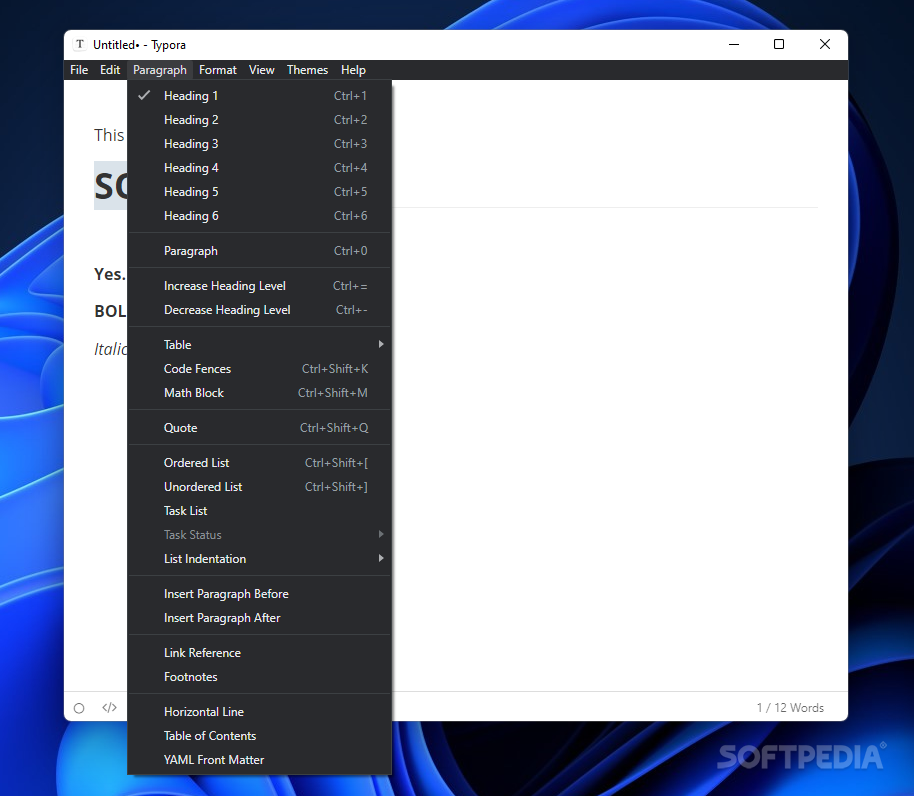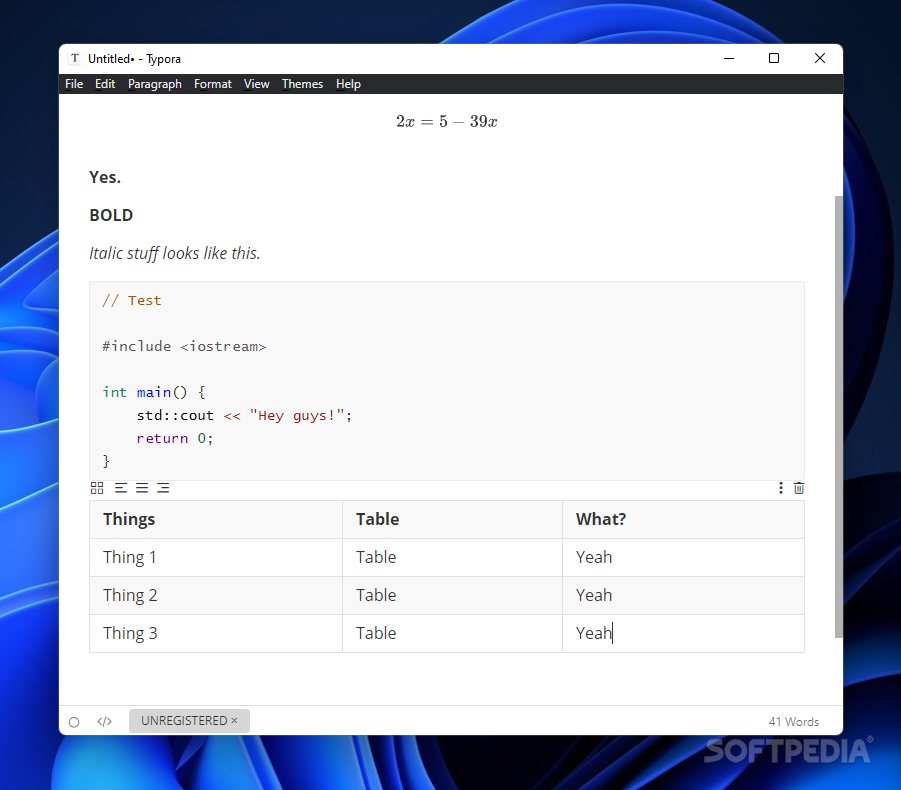

TYPORA LOGO HOW TO
Once you’re in the habit of regularly committing your changes, and you know how to write great commits, you have a clear, understandable change history. Git solves much of this the habit of committing changes is the only thing you need to build – and that isn’t hard. And if you do, they inflate your file size to a ridiculous point. In document writing of any kind, versioning came relatively late to the piece, and it’s problematic. Git gives you a clear and certain changelog Saving to a local repository, and committing your saves as you go, allows you to push it all back to the parent repo when you’re online again without losing the history of your changes. If you don’t have focus and willpower in spades already, being online is a fast-lane to destruction. It is hard because it takes focus and willpower.
TYPORA LOGO PROFESSIONAL
When a tech company creates a writing app that is browser-only, or internet-only, it’s a very good way to identify that it was not created by a professional or creative writer.

… which means that you can create every kind of publication you want to, from your base file, without having to export, reformat, or deal with horrible errors. You can keep your singular, lightweight file, and from it produce: Typora outputs to all of your favourite file formats. Typora lets you create lovely files in a huge number of formats Which means that if you only had Markdown files on a 500 GB drive, and each one was about 70 kb, you’d have 7,529,411 files. Markdown lets you create extensive, beautiful files that can be as small as 70 kb.

Join me wholeheartedly by singing fuck that.

You know how your Word files get really big, really fast? How one simple text file in Word takes up the space that used to occupy an entire disk (1.44 MB)? And how suddenly you need an ever-expanding storage system? Now that you know I write in Markdown almost exclusively, it’s time to tell you why. The only step it adds for me is a back-up step: Finish writing, export to Markdown, add to the repo, commit the repo, boom. But what Highland 2 lacks in platform flexibility, it gains in portability: Its files can be output to Markdown and saved in a repo.
TYPORA LOGO MAC
My mac is slow, my work-on-the-move platform is Windows. But it has a significant limitation: It’s only for mac. In 2018, I discovered that brilliant app Highland 2, which I love for its extended capabilities: Scratchpad, notes, ‘bin’, writing stats, sprints. (I use Bitbucket because it integrates seamlessly with Trello.) My default workflow is now Typora + Github creatively and Typora + Bitbucket at work.
TYPORA LOGO CODE
But all new things have a learning curve surmounting the learning curve with docs like code is short and fast (because it’s logical). This is because, like many technical and professional writers of all kinds, I write docs like code. ‘Migrating away from standard writing applications’ means that I only use Word or LibreOffice or OpenOffice (or insert other here) when my clients *absolutely require it*, and even then I try to wriggle my way out of it. Yet in the past year, I’ve started migrating away from standard writing applications, at work and in my creative life. If the internet was a department store with a fancy shopfront, I’m the little girl with her forehead pressed to the glass and drooling at what is within. Since graduating from uni in 2002, I’ve been through so many. The struggle to find a great writing application is real.


 0 kommentar(er)
0 kommentar(er)
